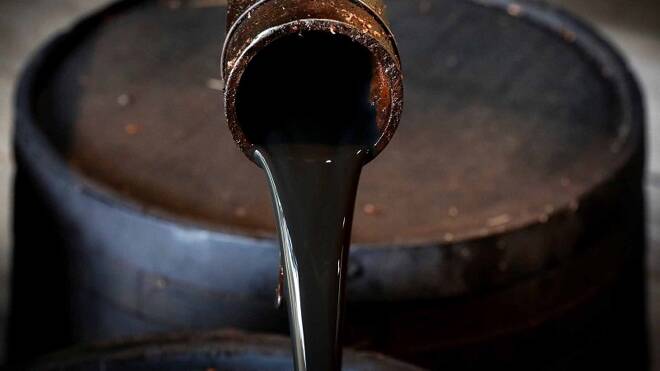Advertisement
Advertisement
Oil Price Fundamental Daily Forecast – Traders Shrug Off Increased OPEC+ Supply, Focused on Rising Demand
By:
The price action suggests that traders believe the global economy can easily absorb an additional 400,000 bpd of crude.
U.S. West Texas Intermediate and international-benchmark Brent crude oil futures continue to grind higher on Tuesday with both markets getting close to challenging 2014 highs. Helping to drive the markets into a three-week high on Tuesday is the OPEC+ decision to stick with its planned output rises rather than increasing production. Furthermore, the numbers are starting to show a decrease in COVID cases, which should bode well for future demand.
At 12:13 GMT, December WTI crude oil is trading $78.23, up $0.90 or +1.16% and December Brent crude oil is at $82.39, up $1.13 or +1.39%.
Traders have so far shrugged off expectations of increased production from the U.S. due to the recovery from Hurricane Ida, and no one is even talking about the possibility of additional oil from a U.S.-Iran nuclear deal any more.
Right now, it’s all about demand as the global economy is expected to open up further as the number of COVID cases drop. Pressure from the United States and India aren’t even a concern with OPEC+ clearly in the driver’s seat when it comes to controlling supply.
There is some chatter about high prices causing demand destruction but right now crude speculators see no reason why Brent can’t reach the $90 level with WTI rapidly moving toward $80 or better.
OPEC+ Meeting Recap
OPEC+ agreed on Tuesday to adhere to its plan formulated in July to boost output by 400,000 barrels per day (bpd) each month until at least April 2022 to phase out 5.8 million bpd of existing production cuts.
In late September, the OPEC+ Joint Technical Committee (JTC) said it expected a 1.1 million bpd supply deficit this year which could rise to 1.4 million bpd next year.
Russian Deputy Prime Minister Alexander Novak said after the talks he believed the market is now balanced. Not everyone is on board with Novak’s proclamation, however. Barclay’s Bank, for example, sees a tight situation with risks skewed to the upside. That translates into higher prices.
“The (price) move looks a bit outsized given the ministers just reaffirm the decision announced in July but it shows how tight the market is, reinforcing our view of asymmetric price action with risks skewed to the upside at these inventory levels,” Barclays said in a note.
Daily Forecast
The price action suggests that traders believe the global economy can easily absorb an additional 400,000 bpd of crude. Otherwise, prices would’ve dropped on the news of the OPEC+ decision.
Furthermore, bullish traders are pricing in a drop in U.S. crude oil and distillate inventories in today’s American Petroleum Institute (API) weekly report and Wednesday’s weekly report from the U.S. Energy Information Administration (EIA).
Five analysts surveyed by Reuters estimated on average that crude inventories declined by about 300,000 barrels in the week to October 1.
The next major concern for bullish traders will be whether a fourth wave of COVID infections hits. If it does become a major event then demand could drop again.
For a look at all of today’s economic events, check out our economic calendar.
About the Author
James Hyerczykauthor
James Hyerczyk is a U.S. based seasoned technical analyst and educator with over 40 years of experience in market analysis and trading, specializing in chart patterns and price movement. He is the author of two books on technical analysis and has a background in both futures and stock markets.
Advertisement
